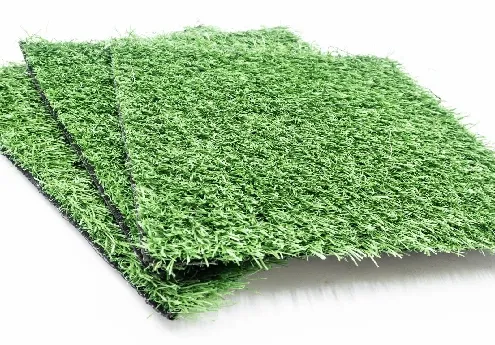
- Afrikaans
- Arabic
- Belarusian
- Bengali
- Czech
- Danish
- Dutch
- English
- Esperanto
- Estonian
- Finnish
- French
- German
- Greek
- Hindi
- Hungarian
- Icelandic
- Indonesian
- irish
- Italian
- Japanese
- kazakh
- Rwandese
- Korean
- Kyrgyz
- Lao
- Latin
- Latvian
- Malay
- Mongolian
- Myanmar
- Norwegian
- Persian
- Polish
- Portuguese
- Romanian
- Russian
- Serbian
- Spanish
- Swedish
- Tagalog
- Tajik
- Thai
- Turkish
- Turkmen
- Ukrainian
- Urdu
- Uighur
- Uzbek
- Vietnamese
Sustainable Alternatives to Natural Grass for Eco-Conscious Landscaping Solutions
Dec . 06, 2024 07:03 Back to list
The Rise of Environmentally Friendly Fake Grass
As environmental concerns continue to dominate global discussions, innovative solutions are emerging to address sustainability challenges in various sectors, including landscaping and recreational areas. One such solution gaining popularity is environmentally friendly fake grass, or artificial turf. This alternative to traditional grass has evolved significantly in recent years, offering a more sustainable option for homeowners, businesses, and municipalities alike.
Understanding Environmentally Friendly Fake Grass
Environmentally friendly fake grass is designed to provide the aesthetic appeal and functionality of natural grass without the extensive maintenance and environmental impact often associated with lawns. Traditional grass requires constant watering, mowing, fertilizing, and pest control, all of which can contribute to water consumption, greenhouse gas emissions, and chemical runoff. In contrast, modern synthetic grasses are made from recycled materials and are designed to minimize environmental impact while providing a safe and durable surface for recreation.
Benefits of Fake Grass
One of the primary benefits of environmentally friendly fake grass is its conservation of water. In areas prone to drought or where water is scarce, switching to artificial turf can result in substantial water savings. For instance, an average lawn can consume thousands of gallons of water annually, but fake grass requires no irrigation. This is especially critical in regions where water resources are limited and conservation is paramount.
Additionally, fake grass eliminates the need for chemical fertilizers and pesticides. The manufacturing of modern synthetic turf involves processes that minimize the use of harmful substances, making it an excellent choice for households with children or pets. Many producers are now committed to creating turf that is non-toxic and free from hazardous materials, further enhancing its appeal to eco-conscious consumers.
Durability and Low Maintenance
Environmentally friendly fake grass is engineered to withstand heavy foot traffic and harsh weather conditions, making it an incredibly durable landscaping option. Unlike natural grass, which can become patchy and worn over time, synthetic turf holds its form and color, reducing the need for repairs or replacements. The low-maintenance aspect of fake grass is also a significant advantage, allowing homeowners to enjoy a lush, green lawn without the hours of upkeep traditionally required.
environmentally friendly fake grass

Contribution to Biodiversity and Green Spaces
Contrary to some misconceptions, the adoption of fake grass does not have to compromise biodiversity. In fact, it can complement ecological efforts when used thoughtfully. For example, homeowners can choose to install synthetic grass in specific areas while dedicating other parts of their yard to native plants and flowers that support local ecosystems. This hybrid approach fosters biodiversity while still benefiting from the aesthetic and practical advantages of artificial turf.
Furthermore, communities are increasingly turning to environmentally friendly fake grass for public parks and recreational areas. Cities can create green spaces that remain usable year-round without the wear and tear that natural grass often endures. These spaces provide essential areas for recreation while reducing maintenance costs for municipalities, allowing them to allocate resources elsewhere.
Recycling and Sustainability
Another critical aspect of environmentally friendly fake grass is its potential for recycling. Many innovative manufacturers are creating turf products that are made from recycled plastics, which helps divert waste from landfills. Additionally, at the end of its life cycle, synthetic turf can often be recycled, further diminishing its environmental footprint. This emphasis on recycling aligns with broader sustainability goals and efforts to minimize waste in our increasingly consumption-driven society.
Conclusion
As society searches for more sustainable living practices, environmentally friendly fake grass stands out as a beneficial alternative to traditional lawns. By conserving water, reducing the need for chemicals, and offering a durable and attractive landscaping option, artificial turf presents a viable solution for a variety of settings. Moreover, with its potential for recycling and integration into broader ecological practices, fake grass can play a significant role in enhancing both biodiversity and environmental health.
In a world grappling with pressing ecological challenges, making informed choices about our landscapes can contribute to a greener future. With advances in technology and a commitment to sustainability, environmentally friendly fake grass may be the key to achieving beautiful, functional, and eco-conscious outdoor spaces.
-
The Benefits of Artificial Turf for Indoors
NewsJul.15,2025
-
How Artificial Grass Suppliers Ensure Quality Products
NewsJul.15,2025
-
Artificial Grass and Pets: A Space for Relaxation
NewsJul.08,2025
-
Balcony & Outdoor Decoration with Artificial Grass
NewsJul.08,2025
-
Best Indoor Artificial Grass for Home
NewsJul.07,2025
-
Best Pet Turf for Dogs: Safe & Durable Artificial Grass Options
NewsJul.07,2025
Products categories









